Despite progress before the Covid-19 pandemic, life expectancy in Latvia remains low compared to other EU countries due to the relatively high prevalence of behavioural risk factors, as well as low public spending on health and care accessibility issues.
While Latvia was largely spared from the first wave of Covid-19, towards the end of 2020 the infection rate spiked, bringing to light issues around equipment and staff shortages. To support the healthcare system during the pandemic, the government made available additional funding for equipment, staff bonuses and structural improvements.
Latvia’s health status
Despite significant gains over the past two decades, the life expectancy of the Latvian population remains among the lowest in the EU. Moreover, the Covid-19 pandemic disrupted the steady growth trend in 2020. The gender gap in life expectancy is more than nine years – the second highest in the EU – and the life expectancy of Latvians varies considerably by educational level.
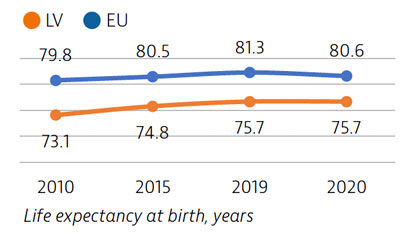
Risk factors
Latvia faces a considerable health burden from behavioural risk factors: the country has the highest level of alcohol consumption in the EU, and one in four men binge drink monthly. The proportions of obese adults and adults who smoke daily are well above the EU average. The Ministry of Health has developed a number of plans and policies to reduce these risk factors over the coming years.
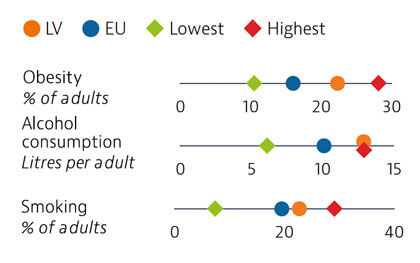
Latvia’s health system
Latvia has a national health system with strong government stewardship, but which remains severely underfunded. Even though health expenditure per capita has increased by 75% since 2010, the level remains the fourth lowest in the EU. Only 61% of health expenditure is publicly funded, and the share of out-of-pocket spending is the second highest in the EU.
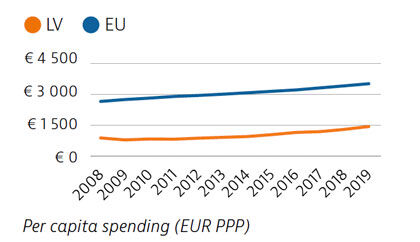
Effectiveness
Latvia’s mortality rates from both preventable and treatable causes are the second highest in the EU. Cancer screening rates are low, despite efforts to increase uptake; this is reflected in high mortality rates for screening-amenable cancers. The Ministry of Health has a clear strategic focus on prevention and health promotion, but resources are limited.
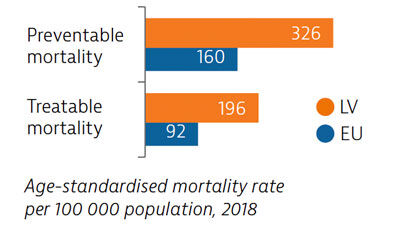
Accessibility
Unmet needs in Latvia were among the highest in the EU, both before and during the Covid-19 pandemic. This is driven by high out-of-pocket expenditure and a benefits package that is comparatively narrow and limited by a quota system. As a result, 15% of households experienced catastrophic spending on health. The uneven geographical distribution of health professionals creates further barriers to access.
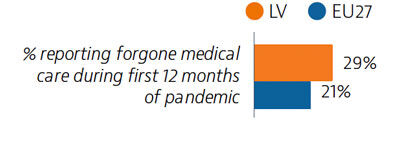
Resilience
While the impact of the first wave of Covid-19 in Latvia was moderate, by the end of 2020, the infection rate and mortality rate increased greatly, and equipment, personnel and bed shortages occurred. The government provided funding support to the healthcare system during the pandemic. By the end of August 2021, 46% of the population received two doses or equivalent, which was below the EU average.
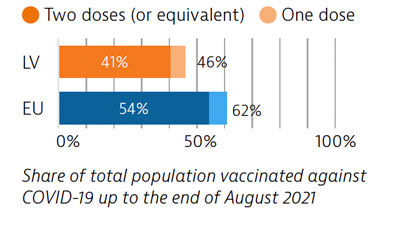
OECD/European Observatory on Health Systems and Policies (2021), Latvia: Country Health Profile 2021, State of Health in the EU, OECD Publishing, Paris/European Observatory on Health Systems and Policies, Brussels.











